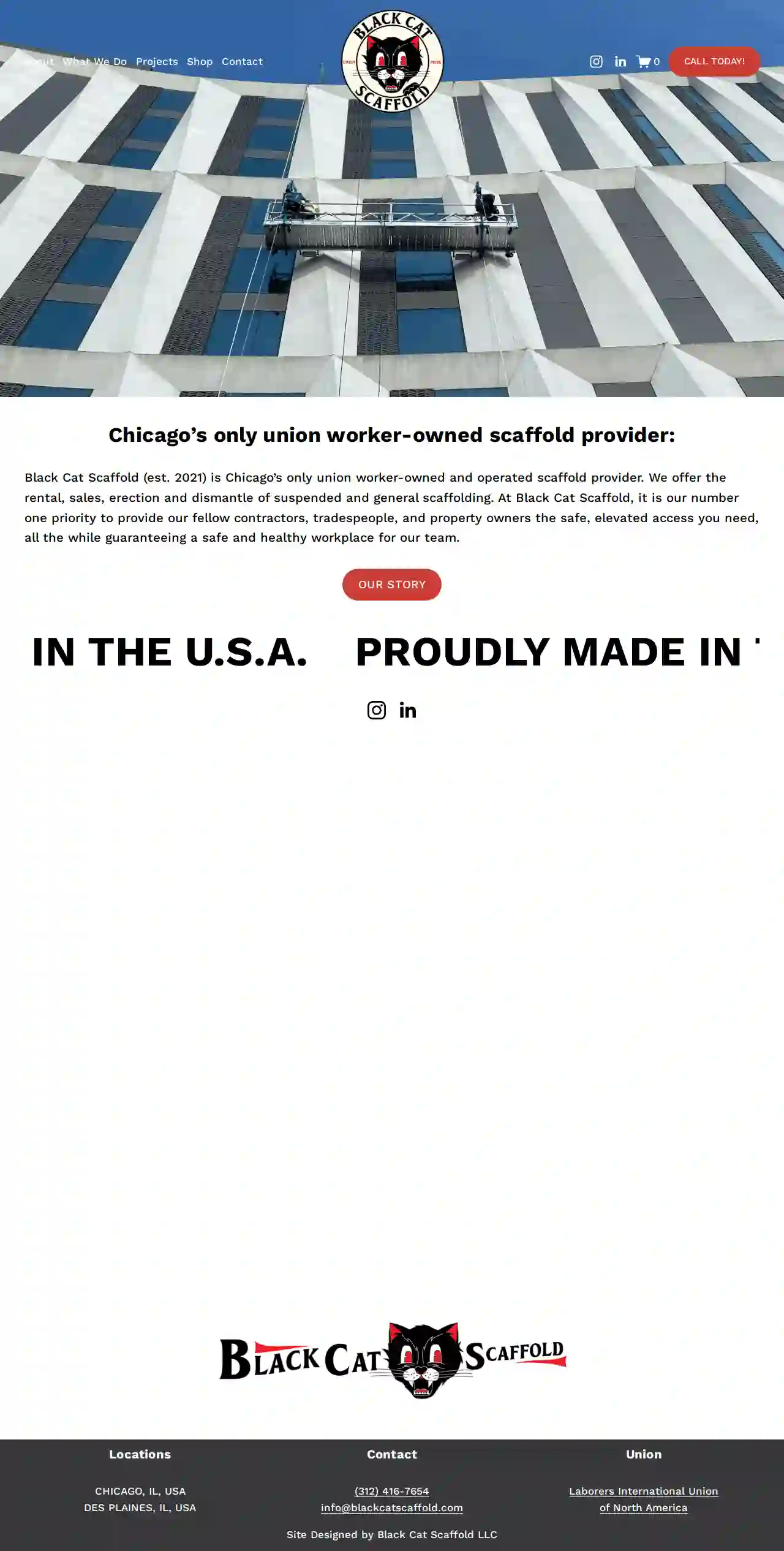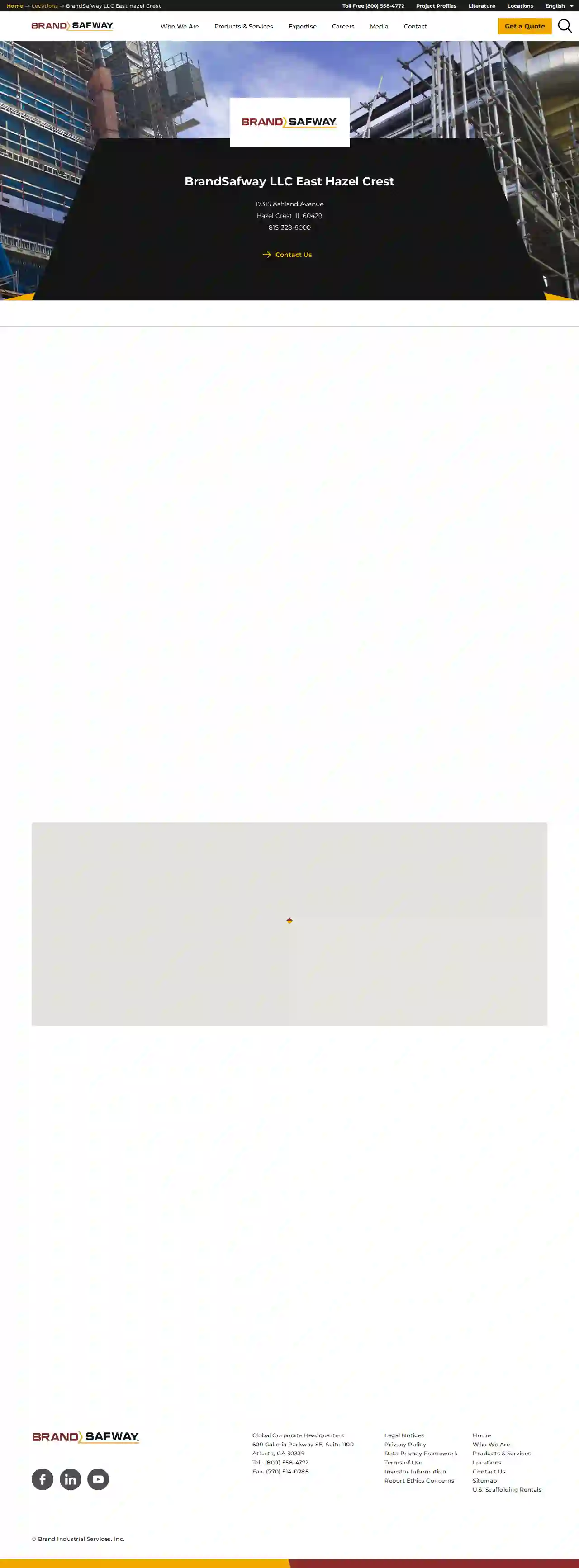Scaffolding Companies Midlothian
Find the best Scaffolding Solutions in Midlothian
Receive 3 FREE Construction Scaffolding quotes for your project today! Compare profiles, reviews, accreditations, portfolio, etc... and choose the best offer.

JC Licht Benjamin Moore Paint & Decor Store Addison
4.7139 reviews1500 N. Addison Ave., Addison, 60102, USShop JC Licht Online or at one of our 48 locations in Chicagoland. Your local, neighborhood Benjamin Moore dealer. Our Story JC Licht has been serving the Chicagoland area for over 100 years. We are a family-owned and operated business that is committed to providing our customers with the best possible service and selection. We offer a wide variety of Benjamin Moore paints, stains, and finishes, as well as a full line of window treatments, wallpaper, and hardware. We also offer a variety of services, including color consultations, in-home estimates, and professional installation. Our Mission Our mission is to provide our customers with the best possible experience. We want to make sure that you are happy with your purchase and that you feel confident in your decision. We are committed to providing you with the highest quality products and services, and we are always here to answer your questions and help you find the perfect solution for your needs. Our Team Our team is made up of experienced professionals who are passionate about helping you create the home of your dreams. We are committed to providing you with the best possible service and we are always here to answer your questions and help you find the perfect solution for your needs.
- Services
- Why Us?
- Gallery
Get Quote
Chicago Scaffolding Inc.
4.331 reviewsChicago, Illinois, 4824 W. Lake Street, 60644, USChicago Scaffolding Inc. (CSI), family owned and operated since 1988, has a rich history of experience and a family tradition of hard work and dependability. CSI prides itself on the core belief of providing exceptional service, quality, and safety to all clients. With a strong commitment to long-term professional relationships, we prioritize 100% customer satisfaction.
- Services
- Why Us?
- Accreditations
- Our Team
- Testimonials
- Gallery
Get Quote
Prime Scaffold Inc
4.19 reviews1220 North Ellis, Bensenville, 60106, USPrime Scaffold has been planning, designing, engineering and installing scaffolding systems in the Chicago metropolitan area for over 35 years. With a team of fully engaged and well-trained installers, they provide innovation, attention to detail, safety and excellent customer service. Their expertise meets specific project needs, working on large and small projects for local buildings, museums, airports, ballparks, skyscrapers and famous landmarks. They are OSHA compliant and have experience with complex projects such as the Garfield Park Conservatory and 401 North Michigan Avenue.
- Services
- Why Us?
- Gallery
Get Quote
MVC Painting
4.976 reviews800 E Northwest Hwy, Suite 750, 800 E Northwest Hwy Suite 750, Palatine, 60074, USWelcome to MVC Painting, a full-service painting company with over 15 years of experience in making our client's home improvement dreams become a reality. Our team of skilled professionals is dedicated to providing high-quality workmanship and customer service. We offer a wide range of services, including interior/exterior painting, drywall installation and repair, power washing, and more. With 100% customer satisfaction guaranteed, you can rely on us to get it right the first time. We have 5-star ratings from hundreds of customers just like you.
- Services
- Why Us?
- Gallery
Get Quote
Black Cat Scaffold
52 reviewsChicago, USBlack Cat Scaffold (est. 2021) is Chicago’s first union worker-owned and operated scaffold provider offering the rental, sales, erection and dismantle of suspended and general scaffolding. At Black Cat Scaffold, it is our number one priority to provide our fellow contractors, tradespeople, and property owners the safe, elevated access you need, all the while guaranteeing a safe and healthy workplace for our team. As an American, minority-owned (MBE Certified), small business, we offer superior client focus and competitive pricing. Unlike most in our local industry, Black Cat Scaffold offers majority American-made swing stage and scaffold equipment through our US (Ohio) manufacturers. At Black Cat Scaffold it is our belief that when union laborers have ownership in the business they work for, they are able to provide top tier services and expertise. With a collective 25 years of experience in the Chicago Building Trades, this is our pledge to every client. Thank you for considering Black Cat Scaffold for your future access needs!
- Services
- Why Us?
- Accreditations
- Gallery
Get Quote
BrandSafway LLC East Hazel Crest
123 BrandSafway Blvd, East Hazelcrest, 12345, USBrandSafway is a leading provider of access solutions, including scaffolding, aerial work platforms, and forming and shoring equipment. With a strong commitment to safety, quality, and customer satisfaction, BrandSafway offers a wide range of services tailored to meet the unique needs of clients across various industries. Their team of experienced professionals is dedicated to delivering innovative solutions that enhance efficiency and productivity, ensuring successful project outcomes.
- Services
- Why Us?
- Accreditations
- Our Team
- Testimonials
Get Quote
Gilco Scaffolding Co
3.316 reviews515 Jarvis Ave, Des Plaines, 60018, USExcellence In Scaffold Installations, Rentals, Sales And Safety Chicago’s Leading Scaffolding Contractor Since 1938 – Proudly Serving Chicago Our Services Family owned and operated since 1938, Tom and Gus continue the company’s commitment to safety, customer service and innovative designs. Scaffolding Services At Gilco Scaffolding Co LLC, we are a full-service company dedicated to providing value-added scaffolding services to customers in all of the construction trades. Who we are Our dedication and hard work have allowed us to remain a successful company for many years. As a family-owned and operated business, we pride ourselves on providing a personalized touch to each of our clients. Tom, and Gus understand that personalized customer service is the key to building a loyal clientele base.
- Services
- Why Us?
- Gallery
Get Quote
Thompson Rental Station, Inc.
4.583 reviews215 W. Irving Park Road, Bensenville, 60106, USThompson's Rental specializes in equipment and tool rentals, as well as equipment sales, serving Northeastern Illinois. With two rental store locations in Bensenville and Des Plaines, IL, they offer a wide selection of equipment rentals and sales, including excavators, skid steers, lifts, lawn and garden tools, generators, air compressors, and more. They also provide party rentals and used equipment for sale. Their commitment to customer satisfaction and quality equipment sets them apart.
- Services
- Why Us?
- Gallery
Get Quote
International Equipment Inc
25218 S State St, Crete, 60417, USInternational Equipment, Inc. is a leading supplier and installer of high-quality scaffold equipment that enables your crews to work productively and safely at heights. Wherever you need your scaffolding to take you International Equipment has the right equipment for your project. Servicing all of the Midwest, International Equipment responds quickly to the needs of our customers, even during emergencies. We are a devoted team committed to providing the right product for your project with a personal touch that many larger competitors cannot match. We offer designs in augmented or virtual reality as well as 3D allowing you to see your design as it will appear when installed. You won’t pay for estimator’s guess work or extra rental charges for equipment you don’t need. Parts lists and installation costs are accurate with our estimating systems. With our resources and extensive inventory of equipment we are able to provide you with a variety of options to buy or rent. From project planning and installation of equipment to rigorous safety standards and training, International Equipment is there for you from start to finish.
- Services
- Why Us?
- Gallery
Get Quote
Rental City Inc
4.5109 reviews2508 N. Mattis Ave., Champaign, 61821, USWelcome to Rental City! When you need a project done right, quality tools can be just as important as the people using them. We know you have other choices for your equipment needs. What sets Rental City apart from others is our dedication to you, our customer, with spectacular customer service. With decades of experience and over 2,000 items available for short-term rental, Rental City is a family owned business dedicated to serving your needs; whether residential or corporate. Rental City began with Mac D. Drysdale’s commitment to providing the best possible equipment in impeccable condition to benefit the greater Champaign community over 60 years ago. Today, we strive to offer the best product catalog, most convenient solutions, and the most effective and pleasant customer service available. We look forward to the opportunity of serving your family or business, and are here to help you get the job done.
- Services
- Why Us?
- Gallery
Get Quote
Over 2,353+ Scaffolding Contractors onboarded
Our scaffolding companies operate in Midlothian & beyond!
ScaffoldingHQ has curated and vetted the Best Scaffolding Contractors near Midlothian. Find a top & trustworthy business today.
Frequently Asked Questions About Scaffolding Companies
- Workers: Consider the number of workers on the scaffolding at any given time.
- Materials: Include the weight of building materials, tools, and equipment being used on the platform.
- Environmental Factors: Factor in potential loads from wind or snow, especially for taller scaffolding structures.
- A temporary structure with a larger platform for workers and materials.
- Offers greater stability and working space.
- Suitable for tasks requiring movement and multiple workers.
- Used for higher elevations and more complex projects.
- Used for reaching specific points at height for short durations.
- Less stable than scaffolding, requiring more caution and balance.
- Not suitable for tasks involving heavy materials or extended work periods.
- Experience: 'How long have you been in business, and what experience do you have with projects like mine?'
- Licensing and Insurance: 'Are you fully licensed and insured, and can I see proof of coverage?'
- Safety Record: 'What are your safety procedures, and how do you ensure worker safety on the job site?'
- References: 'Can you provide references from previous clients?'
- Quotes and Costs: 'Can you provide a detailed quote that outlines all costs, including materials, labor, and any additional services?'
- Project Timeline: 'What is the estimated timeframe for scaffolding erection and dismantling?'
- Communication: 'How will you communicate with me throughout the project?'
- Size and Complexity: Larger, more intricate scaffolding structures will naturally take longer to assemble.
- Scaffolding Type: System scaffolding, with its pre-engineered components, can be erected faster than traditional tube and clamp scaffolding.
- Accessibility: Difficult site access or limited working space can prolong the erection process.
- Crew Size and Experience: The number and skill level of the scaffolding erectors will impact the speed of assembly.
What is the weight limit for scaffolding?
What is the difference between a scaffold and a ladder?
Scaffolding:
What questions should I ask a scaffolding company before hiring them?
How long does it take to erect scaffolding?
What is the weight limit for scaffolding?
- Workers: Consider the number of workers on the scaffolding at any given time.
- Materials: Include the weight of building materials, tools, and equipment being used on the platform.
- Environmental Factors: Factor in potential loads from wind or snow, especially for taller scaffolding structures.
What is the difference between a scaffold and a ladder?
Scaffolding:
- A temporary structure with a larger platform for workers and materials.
- Offers greater stability and working space.
- Suitable for tasks requiring movement and multiple workers.
- Used for higher elevations and more complex projects.
- Used for reaching specific points at height for short durations.
- Less stable than scaffolding, requiring more caution and balance.
- Not suitable for tasks involving heavy materials or extended work periods.
What questions should I ask a scaffolding company before hiring them?
- Experience: 'How long have you been in business, and what experience do you have with projects like mine?'
- Licensing and Insurance: 'Are you fully licensed and insured, and can I see proof of coverage?'
- Safety Record: 'What are your safety procedures, and how do you ensure worker safety on the job site?'
- References: 'Can you provide references from previous clients?'
- Quotes and Costs: 'Can you provide a detailed quote that outlines all costs, including materials, labor, and any additional services?'
- Project Timeline: 'What is the estimated timeframe for scaffolding erection and dismantling?'
- Communication: 'How will you communicate with me throughout the project?'
How long does it take to erect scaffolding?
- Size and Complexity: Larger, more intricate scaffolding structures will naturally take longer to assemble.
- Scaffolding Type: System scaffolding, with its pre-engineered components, can be erected faster than traditional tube and clamp scaffolding.
- Accessibility: Difficult site access or limited working space can prolong the erection process.
- Crew Size and Experience: The number and skill level of the scaffolding erectors will impact the speed of assembly.